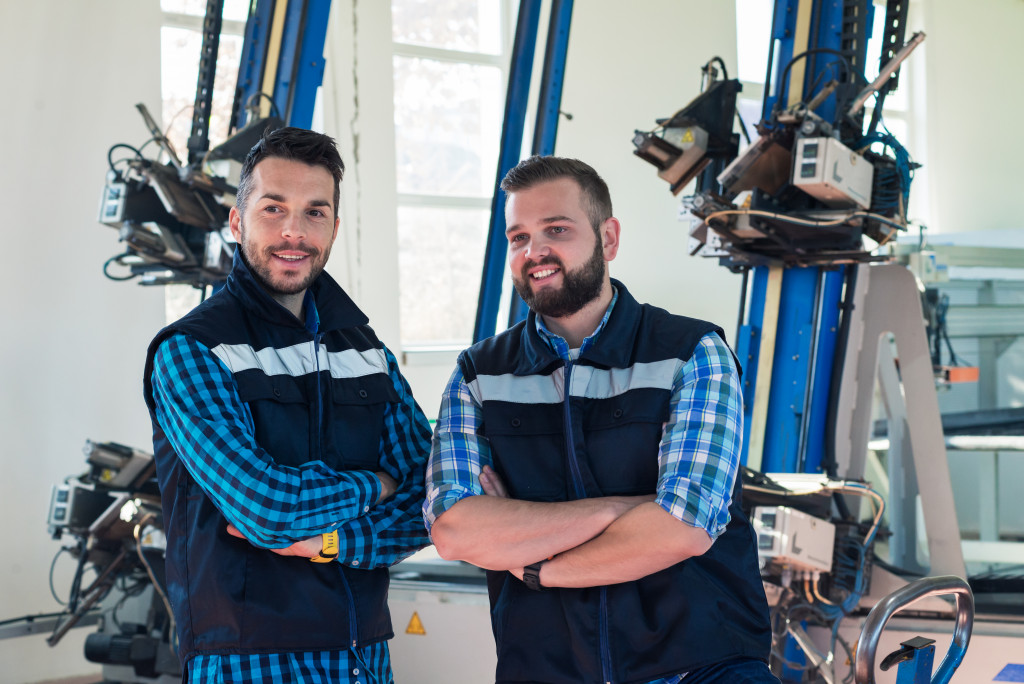- A comprehensive safety training program tailored to the business’s unique needs is essential.
- Implement strict equipment maintenance protocols, including timely repairs and proactive replacements.
- Enforce using personal protective equipment (PPE) and regularly inspect its condition.
- Develop and practice emergency response drills for various scenarios.
- Perform regular audits of electrical systems to mitigate potential disasters proactively.
Safety cannot be overstated in the manufacturing industry, where the daily grind involves heavy machinery, manual labor, intricate workflows, and high-stakes operations. Ensuring a secure environment protects your workforce, minimizes downtime, and maintains productivity. As you navigate the complexities of industrial safety standards, here are five crucial strategies to safeguard your manufacturing business and everyone who steps within its premises.
1. Establish a Comprehensive Safety Training Program
The foundation of safety in manufacturing lies in comprehensive, up-to-date training programs. Your employees need to understand the hazards in their working environment and how they can mitigate these risks.
Here are tips for establishing a comprehensive safety training program:
Understand the Unique Requirements of Your Business
Every manufacturing business is different, even within the same industry. Tailor your safety training program to the specific needs and risks associated with your operations. Develop role-specific module-based training to ensure employees understand the hazards relevant to their work.
Utilize a Blended Learning Approach
A blend of traditional classroom training and modern e-learning solutions can effectively deliver safety education. Digital tools like VR and AR can provide realistic, immersive experiences that enhance understanding and retention of safety procedures. Intermix this with practical, on-the-ground training for a well-rounded program.
Foster Open Communication
Encourage employees to speak up about safety concerns and provide feedback on training sessions. This helps enhance the effectiveness of your safety program and fosters a collaborative environment where safety is everyone’s responsibility.
Regularly Assess and Update Your Training Program
Safety standards and regulations evolve, and so should your training program. Regularly review and update your safety training content to reflect new knowledge, innovations, and regulatory changes. Additionally, periodic assessments can help gauge the effectiveness of the training, identify gaps, and make necessary improvements.
2. Implement Strict Equipment Maintenance Protocols
Regular equipment maintenance is a no-brainer in a setting where machinery is the lifeblood of productivity. Well-maintained equipment reduces the chances of malfunctions and accidents. Implement a rigorous maintenance schedule for all machines and keep detailed records of these checks. This approach isn’t just about tightening a few bolts; it involves thorough inspections, timely repairs, and proactive replacements.
Ensure that your employees know how to report potential equipment issues and understand the importance of doing so immediately. Creating an environment where staff members feel responsible for their tools and machines can lead to more proactive maintenance and care from everyone involved.
3. Use Protective Gear and Safety Equipment
No matter the extent of the safety measures in place, personal protective equipment (PPE) remains a crucial line of defense. Enforce the use of appropriate safety gear, such as helmets, safety goggles, gloves, and earplugs, tailored to the specific risks that your workers face. Regularly inspect this equipment to ensure it’s in good condition and properly fitted for those who rely on it.
Beyond PPE, invest in safety equipment for your facility. This includes guardrails, safety nets, noise-canceling elements, and ventilation systems. Each piece contributes to creating an environment that protects your team from the hazards of manufacturing work.
4. Develop and Practice Emergency Response Drills
When was the last time your company ran a fire drill? Emergencies are chaotic, but regular practice can instill an orderly response that can save lives. Develop comprehensive emergency plans for various scenarios, such as fires, power outages, and natural disasters. Communicate these procedures and ensure all employees know their roles during these drills.
Running regular drills goes beyond ticking a compliance box; it helps staff react quickly and efficiently in high-pressure situations. Post-emergency drill reviews are also vital, offering a platform to discuss what went well and identify areas where the response could be smoother or more effective.
5. Regularly Audit Electrical Systems
A minor glitch in the electrical system can lead to a major catastrophe in manufacturing. Regular audits of these systems help prevent such disasters. While your maintenance team can handle basic checks, hiring a professional electrician for an in-depth review is wise. These experts can assess, diagnose, and remedy issues that aren’t always apparent to the untrained eye.
Professional electricians bring expertise that’s invaluable in a high-stakes manufacturing environment. They not only fix issues but can also offer insights into energy efficiency and system optimization, potentially saving your business money in the long run. Their skill set is a crucial component of a robust safety strategy, ensuring that the very power driving your operations doesn’t turn into a liability.
In Closing
Safety in the manufacturing sector is a multifaceted challenge, requiring your unwavering commitment and proactive approach. By emphasizing education through comprehensive training programs, adhering to equipment maintenance protocols, enforcing the use of personal protective equipment, practicing emergency response drills, and investing in regular electrical audits by a professional electrician, you build an environment of vigilance and precaution.
Such a space not only ensures the safety of your employees but also contributes significantly to the efficiency and longevity of your business operations. Safety remains a paramount investment in a precision, power, and people-driven sector.


